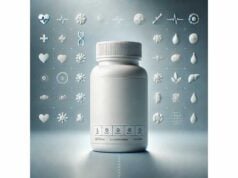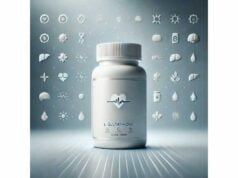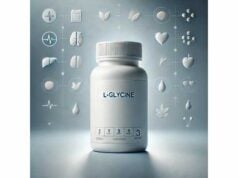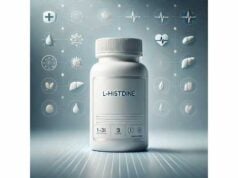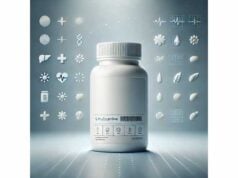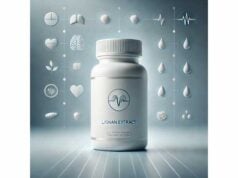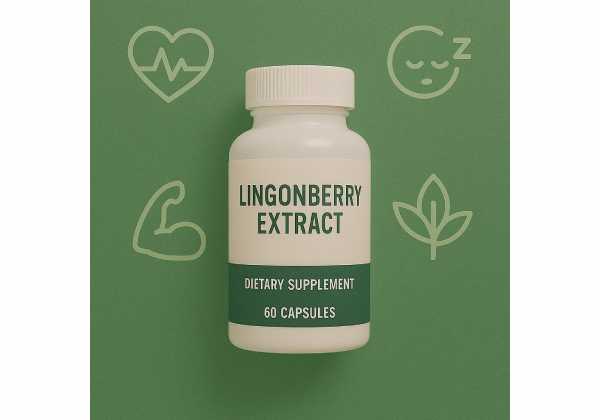
Lingonberry (Vaccinium vitis-idaea) is a small, tart, evergreen berry native to boreal forests. Its bright red skins are packed with polyphenols—especially proanthocyanidins, anthocyanins, flavonols (e.g., quercetin), and phenolic acids—that give the fruit intense color and notable bioactivity. In traditional Nordic cuisines, lingonberries appear as jams, juices, and condiments; today, concentrated extracts and mouthrinses are also available. Early clinical work focuses most strongly on oral health (fermented lingonberry juice rinses), while broader evidence comes from berry-family research that explores blood pressure, metabolic markers, and gut microbiota modulation. Compared with sweeter berries, lingonberries are naturally low in sugar and offer a dense phenolic profile per gram. This guide walks you through what the science suggests, where findings are solid or still preliminary, practical ways to use the extract (capsules, liquids, and oral-care formats), typical dosage ranges, safety considerations, and how to choose a high-quality product with confidence.
Quick Overview
- May support oral microbiome balance and reduce markers of oral inflammation; broader cardiometabolic effects are still emerging.
- Start around 200–400 mg/day of a standardized lingonberry extract; for oral rinses, many studies used 10 mL once daily.
- Generally well tolerated; possible stomach upset at higher doses.
- Avoid if you are on anticoagulants, have salicylate sensitivity, or need strict blood-glucose control without medical supervision.
Table of Contents
- What is lingonberry extract?
- Does it work and what to expect?
- Science-backed benefits by area
- How to use it and dosage
- Side effects and drug interactions
- Quality, buying guide, and storage
What is lingonberry extract?
Lingonberry extract is a concentrated preparation made from the fruit of Vaccinium vitis-idaea, a hardy shrub in the heath family that also includes cranberry, blueberry, and bilberry. While fresh lingonberries are extremely tart, standardized extracts concentrate the berry’s phenolic compounds without the added sugars common in jams or nectars. Many products are ethanol-water extracts or spray-dried powders; some are fermented liquids designed for oral use.
The signature phytochemicals in lingonberry include:
- Anthocyanins (e.g., cyanidin-3-galactoside), the pigments responsible for the berry’s deep red color.
- Proanthocyanidins (PACs), polymeric flavan-3-ols that can interact with bacterial adhesion and enzymes.
- Flavonols (quercetin, kaempferol) and phenolic acids (chlorogenic acid), which contribute antioxidant and anti-inflammatory activity.
- Triterpenes in the skins and leaves, studied primarily in lab and animal models.
The extract’s appeal lies in achieving a high phenolic dose with minimal sugar and modest serving size. Unlike cranberry, which is widely used for urinary tract health, lingonberry’s modern research concentration sits at the intersection of oral health (fermented lingonberry juice rinses), cardiometabolic risk markers (drawing partly on the broader Vaccinium literature), and microbiome interactions. The oral-care niche is particularly notable: fermented lingonberry rinses have been studied for effects on salivary flow, buffering capacity, visible plaque, opportunistic microbes such as Streptococcus mutans and Candida, and chairside inflammatory biomarkers (aMMP-8).
Commercial extracts vary widely. Some specify standardization (e.g., “≥ 15–40% total polyphenols” or “≥ 5–10% anthocyanins”), while others highlight total PACs by the DMAC method. Liquid oral rinses typically state the concentration as grams of dry weight per milliliter after fermentation. Because polyphenol profiles shift with cultivar, ripeness, and processing, pick products that declare their standardization and provide third-party testing.
If you already use cranberry or blueberry extracts, lingonberry will feel familiar yet distinct: it is less sugary by taste, phenolic-dense per gram, and studied with an emphasis on oral ecology. That doesn’t imply it outperforms relatives in every domain—it simply fills a different niche, with promising, targeted early-stage human findings in oral health and a plausible, still-developing cardiometabolic story rooted in shared berry polyphenols.
Does it work and what to expect?
Short answer: for oral health, evidence is the most concrete: fermented lingonberry juice (FLJ) mouthrinses used once daily for months have shown improvements in salivary flow and buffering capacity, reductions in visible plaque and bleeding on probing, and favorable shifts in opportunistic oral microbes alongside lower inflammatory markers measured chairside (e.g., aMMP-8). For systemic outcomes (blood pressure, glucose, and lipids), there are mechanistic reasons and supportive findings from broader berry research, but direct, high-quality human trials with lingonberry extract are still limited. That means expectations should be practical and measured.
What you may notice first (oral use):
- Less mouth dryness and improved saliva buffering over weeks.
- A cleaner mouthfeel or fewer plaque hotspots with consistent daily use.
- For some, reduced gum tenderness and fewer bleeding sites during brushing or flossing, especially when paired with routine oral care.
For general supplementation (capsules/powders):
- These aim to deliver polyphenols systemically. Because robust lingonberry-specific RCTs are limited, set expectations similar to other Vaccinium polyphenols: modest support for vascular function and blood-pressure trends in some berry studies, potential anti-inflammatory and antioxidant effects, and post-meal metabolic support. Outcomes, if any, tend to be gradual and small-to-moderate, and they stack with diet and lifestyle—not replace them.
Timeframe and consistency:
- Oral-care benefits typically accrue over 6–12 weeks of daily rinse use, then stabilize with maintenance.
- Systemic effects—if they occur—are usually assessed over 8–12 weeks in berry trials. Think in terms of months, not days.
Who benefits most:
- People with dry mouth sensations, early gingival inflammation, or frequent plaque buildup may notice the most tangible change from FLJ rinses.
- Those pursuing heart-healthy or metabolic-friendly eating patterns (e.g., Mediterranean or DASH) can include lingonberry extract as a polyphenol-rich adjunct, recognizing its role as a supportive rather than primary therapy.
Where evidence is weaker or absent:
- Claims about urinary tract, weight loss, or disease treatment are not established for lingonberry extract. Don’t use it to replace medical care or prescribed medications.
In short, lingonberry extract shows clear promise in oral health routines and a reasonable, biologically plausible role in cardiometabolic wellness borrowed from the Vaccinium evidence base—but the strongest, direct human data right now remain oral-focused. Choose your format (rinse vs capsule) based on the goal you care about most.
Science-backed benefits by area
1) Oral microbiome balance and inflammation
- Fermented lingonberry juice (FLJ) mouthrinses have demonstrated improvements in salivary flow, buffering capacity, and pH in adults over six months to one year of use. Participants also showed reductions in plaque indices and bleeding on probing, a practical sign of lower gingival inflammation.
- Opportunistic microorganisms commonly linked to caries and candidosis—S. mutans and Candida spp.—tend to decline, while Lactobacillus counts may increase, suggesting a shift toward a more symbiotic oral environment.
- A distinctive angle is the proteolytic inflammation marker aMMP-8 measured by chairside tests; FLJ use has been associated with lower aMMP-8, aligning with decreased oral proteolytic burden.
2) Vascular function and blood pressure (indirect Vaccinium lens)
- Across berry interventions, meta-analyses and narrative reviews report small reductions in systolic blood pressure and improvements in endothelial function in some trials. Mechanisms include nitric-oxide pathway support, antioxidant effects, and interactions with gut-derived metabolites (e.g., phenyl-γ-valerolactones from flavan-3-ols).
- Direct, lingonberry-specific RCTs on blood pressure are limited; however, the berry’s anthocyanin and PAC profile resembles that of relatives (blueberry, cranberry, aronia), supporting biological plausibility. Consider any BP effect adjunctive and modest.
3) Metabolic markers and post-meal responses (emerging)
- Preclinical studies with lingonberry powders or skin extracts show blunting of high-fat-diet metabolic stress, with effects on weight gain, glycemia, and hepatic fat in animals. Human data specific to lingonberry remain sparse; still, post-prandial glucose and lipid support is a plausible area for future RCTs, given anthocyanins’ known actions on carbohydrate-digesting enzymes and glucose transporters.
- Translation note: preclinical benefits do not automatically equal clinical outcomes. Treat these signals as hypothesis-generating.
4) Antimicrobial and anti-inflammatory actions
- Polyphenols can disrupt microbial adhesion, inhibit biofilm enzymes, and modulate inflammatory pathways (e.g., NF-κB, MMPs). In the mouth, these effects translate into practical oral-care improvements; systemically, they may underpin observed changes in oxidative stress and endothelial function in berry trials.
5) Gut-oral axis and fermentation
- Fermentation of lingonberry appears to increase phenolic bioavailability, generating smaller phenolic metabolites that may be more readily absorbed and potentially more bioactive. Because most saliva is swallowed, improving oral ecology may contribute—indirectly—to gut microbial balance, though this pathway requires more clinical verification.
What this means for you: if your primary goal is oral health, the human data are already actionable. If you are targeting heart or metabolic health, use lingonberry extract as one piece of a bigger lifestyle pattern (dietary sodium control, fiber-rich foods, exercise), and keep expectations realistic while the human research matures.
How to use it and dosage
Choose the format that fits your goal:
- Oral-care rinses (FLJ): If your focus is dry mouth, plaque, or gum health, a fermented lingonberry rinse is the most evidence-aligned choice.
- Capsules/powders (systemic support): For general polyphenol intake, look for standardized extracts with declared polyphenol or anthocyanin content.
- Juices and concentrates (culinary): Useful for food-first strategies; check added sugars and serving sizes.
Suggested starting ranges (adults):
- Standardized extract (capsules/powders): 200–400 mg/day, taken with meals. If the label reports polyphenols, typical products deliver ≥ 100–200 mg total polyphenols per day in this range. If you are smaller, sensitive, or on multiple medications, begin at the low end and titrate based on tolerance.
- Fermented lingonberry rinse: 10 mL once daily, swished for 30 seconds, then expectorated. Many users choose the evening routine after brushing and flossing. Do not rinse with water immediately afterward; let residuals sit.
- Culinary use: 50–100 g fresh/frozen berries several times per week or 100–200 mL unsweetened juice can complement an overall berry-rich pattern. Culinary amounts won’t match extract potency but are valuable for diet quality.
Timing and stacking:
- For systemic extracts, with meals may improve tolerance and polyphenol absorption.
- Combining with vitamin C-rich foods (citrus, kiwi) can support anthocyanin stability in the gut lumen.
- You can stack lingonberry with blueberry or cranberry in a food-first pattern; for supplements, avoid doubling up on very high-dose polyphenol products unless advised by a clinician, especially if you take anticoagulants.
What labels to prefer:
- Clear standardization (e.g., “≥ 30% total polyphenols” or a validated PAC method like DMAC).
- Third-party testing logos (e.g., USP, NSF, Informed Choice) or a lot-specific certificate of analysis.
- Transparent excipients; avoid unnecessary sweeteners or colorants in capsule products.
- For FLJ, look for fermentation details, intended oral use, and any allergen statements.
Special populations:
- Pregnancy and breastfeeding: safety data are limited for concentrated extracts. Culinary amounts are generally acceptable, but discuss any supplement use with your clinician.
- Diabetes: berry polyphenols may influence post-meal glucose; monitor closely if you use insulin or sulfonylureas.
- Kidney stones: berries contain oxalates; if you have a history of calcium-oxalate stones, coordinate with your provider and prioritize hydration and dietary calcium balance.
When to reevaluate:
- If oral goals (dry mouth, plaque) show no change after 8–12 weeks of consistent rinse use, reassess routine and product quality or consult a dental professional.
- For systemic goals, evaluate trends (blood pressure, lipid panels, fasting glucose) after 8–12 weeks, remembering that supplements complement—rather than replace—core lifestyle measures and medical care.
Side effects and drug interactions
Typical tolerability: Lingonberry extracts are generally well tolerated. The most common complaints are mild gastrointestinal symptoms (fullness, sour stomach) when first starting or when dosing on an empty stomach. Fermented rinses rarely cause transient taste changes; these usually diminish after a week of regular use.
Potential concerns to consider:
- Anticoagulants/antiplatelets: As with many polyphenol-rich botanicals, theoretical additive effects on platelet function are possible. If you take warfarin, DOACs, clopidogrel, or high-dose NSAIDs, discuss any new extract with your clinician and avoid high-dose stacks of multiple berry concentrates.
- Hypoglycemics/insulin: Because polyphenols can influence carbohydrate handling, monitor glucose if you add lingonberry extract on top of medications that lower blood sugar.
- Salicylate sensitivity: Berries contain natural salicylates. Sensitive individuals may experience headaches or hives; discontinue and seek guidance if symptoms arise.
- Kidney stones (oxalate): Limit dose, emphasize hydration, and balance dietary calcium if you have a history of calcium-oxalate stones.
- Allergy: True lingonberry allergy is rare but possible. Stop use if you notice hives, swelling, or breathing difficulty; seek urgent care for severe reactions.
Who should avoid or seek medical guidance first:
- People on anticoagulants/antiplatelets or multiple cardiometabolic drugs.
- Those with salicylate intolerance or significant kidney stone history.
- Pregnant or breastfeeding individuals considering concentrated extracts.
- Anyone with active oral lesions or recent oral surgery who plans to use a fermented rinse—ask your dentist about optimal timing.
Practical safety tips:
- Start with lower doses and increase slowly.
- Take with food to minimize GI discomfort.
- Track any changes in home blood pressure or glucose logs during the first weeks if those are relevant to your care.
- Choose products with independent testing to reduce contamination risks (heavy metals, solvents, adulterants).
Bottom line: in typical supplemental amounts, lingonberry extract is low risk for most adults, but thoughtful integration—especially alongside prescription therapies—keeps you safer and improves the chances you’ll notice the benefits you want.
Quality, buying guide, and storage
A smart purchase determines half your outcome. Here’s how to choose and use lingonberry extract well.
1) Read beyond the front label
- Standardization matters. Look for declared total polyphenols or anthocyanins, or a PAC value by a validated method (e.g., DMAC). Vague claims like “super-strength” are not informative.
- Specify plant part and species. You want Vaccinium vitis-idaea fruit. Leaf extracts have a different phytochemical profile.
- Dose clarity. A quality label tells you mg per capsule, servings per day, and the phenolic yield per serving.
2) Trust but verify
- Seek third-party certifications (USP, NSF, Informed Choice) or batch COAs with identity, potency, and purity data.
- For fermented rinses, confirm intended oral use, fermentation steps (which reduce sugars and may increase bioavailability), and storage instructions.
3) Form and format
- Capsules/powders: convenient for systemic support; powders can blend into smoothies or yogurt. If taste is a concern, capsules mask tart flavors.
- Liquid rinses (FLJ): best aligned with oral-care outcomes; usually used once daily after brushing.
- Culinary forms: frozen berries and unsweetened juices are excellent for food-first strategies; watch added sugars in jams.
4) Smart stacking
- Combine with a tooth-friendly routine: mechanical plaque control (brush/floss), then 30-second FLJ rinse. Leave residuals in place; do not chase with water.
- Systemically, stack lingonberry with dietary nitrate sources (greens, beets) and magnesium-rich foods for a vascular-friendly pattern—always prioritizing whole foods.
5) Storage and shelf life
- Keep powders/capsules dry, cool, and away from light; close desiccant-packed bottles promptly.
- Refrigerate opened fermented rinses if the label instructs; use within the recommended window (often 4–8 weeks after opening).
- Color fading over time signals anthocyanin degradation; use consistent doses rather than “saving” product for too long.
6) Budgeting for value
- Compare cost per mg of polyphenols, not just price per bottle. A product delivering 200 mg polyphenols/day at a fair cost is often a better buy than a “bargain” that under-delivers on actives.
- Beware proprietary blends that hide individual amounts; transparency serves you better.
7) Sustainability notes
- Lingonberries are frequently wild-harvested; responsible suppliers support sustainable picking and fair labor. If those values matter to you, look for supplier disclosures or certifications.
With a standardized extract, independent testing, and a format aligned to your goals (rinse vs capsule), you can integrate lingonberry extract confidently into either an oral-care routine or a broader cardiometabolic lifestyle plan.
References
- Lingonberry (Vaccinium vitis-idaea L.) Fruit Phenolic Bioactivities-A Review of In Vitro and In Vivo Human Studies (2024) (Systematic Review/Open Access via PMC)
- Lingonberry (Vaccinium vitis-idaea L.) Fruit as a Source of Bioactive Compounds with Health-Promoting Effects-A Review (2021) (Systematic Review/Open Access via PMC)
- The Role of Berry Consumption on Blood Pressure Regulation and Hypertension: An Overview of the Clinical Evidence (2022) (Systematic Review)
- Effects of Fermented Lingonberry Juice Mouthwash on Salivary Parameters-A One-Year Prospective Human Intervention Study (2022) (Human Intervention Study)
- Oral Anti-Inflammatory and Symbiotic Effects of Fermented Lingonberry Juice—Potential Benefits in IBD (2024) (Narrative Review)
Disclaimer
This article is for educational purposes and is not a substitute for personalized medical advice, diagnosis, or treatment. Always talk with your physician, dentist, or qualified health professional before starting any new supplement—especially if you have a medical condition, are pregnant or breastfeeding, or take prescription medications. If you experience adverse effects, stop use and seek medical care.
If you found this guide useful, consider sharing it on Facebook, X (formerly Twitter), or your favorite network, and follow us for more evidence-guided wellness content. Your support helps us continue creating high-quality articles.

